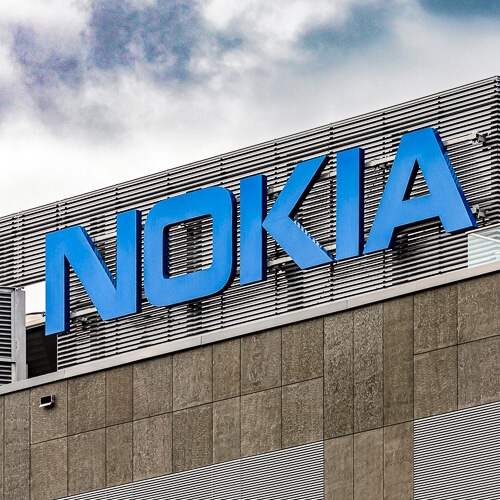
The purpose and usefulness of 5G is a favorite topic of conversation in the telecom industry, especially on the tradeshow circuit. Years since it was first launched, the young mobile technology has so far neither brought new applications nor buoyed telco revenues, executives grumble. But for the Nordic companies that build most of the planet's non-Chinese mobile networks, 5G looks a much happier affair.
That was most apparent for the recently ended third quarter at Nokia. Back in 2019, the Finnish equipment maker's mobile business was a mess after slip-ups on 5G technology. Costs soared, market share fell and investors worried about the long-term outlook. But after a revival that started under former boss Rajeev Suri, and has continued under CEO Pekka Lundmark, 5G seems to be on a roll.
Even without a helpful shove provided by foreign exchange effects, third-quarter revenues at Nokia's mobile business rose 12% year-on-year, to nearly €2.9 billion (US$2.8 billion). Headline sales at the company were up 6% on a constant-currency basis and 16% when currency movements were included, to more than €6.2 billion ($6.1 billion). Nokia's net profit grew 22%, to €428 million ($419 million).
Figure 1:  Nokia CEO Pekka Lundmark has his mobile business to thank for recent sales growth.
Nokia CEO Pekka Lundmark has his mobile business to thank for recent sales growth.
(Source: Nokia)
Like Ericsson, its Swedish competitor, Nokia has clearly benefited from a Western backlash against Huawei, landing contracts to evict the unpopular Chinese vendor in various countries. But the recent improvements – fueled largely by activity in North America – should help to soothe anxiety about Nokia's 5G competitiveness next to Ericsson.
Earlier today, Börje Ekholm, the Swedish vendor's CEO, boasted that its mobile market share outside China has risen by six percentage points since 2017, to 39%. "We've taken market share from all competitors, including our European, and continued to add to our footprint," he told analysts on a call about earnings. Ericsson is still in front, but Nokia is undoubtedly providing a sterner challenge.
Important contract wins in India are an indication of its vigor. "When it comes to growth, really our Indian deals are going to be a major driver," said Lundmark on a call with reporters earlier today. Nokia has taken a 45% share of the 5G contracts recently awarded by Bharti Airtel, an existing customer, and is also now serving Reliance Jio, India's biggest operator, which previously used Samsung as its sole 4G supplier. "We made a significant breakthrough into a new radio network customer with Reliance Jio and have a significant market share of that contract as well," said Lundmark.
Earnings pressure
The news out of Finland was not all positive, though. Nokia's share price was down about 7% during midday trading in Helsinki as investors pored over results that showed a strong performance in both mobile and network infrastructure (covering fixed, IP and optical), where Nokia generates 80% of its sales, but weakness in other units accounting for some 43% of operating profit. Earnings slumped at the licensing unit (Technologies) as Nokia either worked on renegotiating contracts that expired in 2021 or piled into litigation.
Nokia's cloud and network services unit seems to be struggling, too. Sales of €801 million ($784 million) for the third quarter were 3% lower on a constant-currency basis and the unit's operating margin halved from 4% to 2%. Research and development (R&D) spending aimed at campus wireless products was partly to blame, with Lundmark attributing the sales dip to a "rebalancing" of the product portfolio. But competition in many of these software markets is fierce. And the rollout of "standalone" 5G, a variant of the technology that demands a new core network, is taking longer than many had envisaged.
Factor all that in and Nokia's overall operating margin fell one percentage point, to 8.3%. Costs rose in not just R&D but also SG&A (selling, general and administrative expenses). Investors are naturally worried about inflation and Nokia's ability to offset this by raising its own prices. Doing that is easier when contracts are new or being renewed than partway through them, Lundmark previously said.
Want to know more about 5G? Check out our dedicated 5G content channel here on Light Reading.
The 5G outlook is another potential worry. While Nokia's turnaround is obviously welcome, Ericsson believes telco spending will fall in North America next year, and Nokia owed 36% of its third-quarter sales to that region. "We have to be realistic that the North American market has grown strongly," said Lundmark. "It is too early to comment because most operators have not announced capex plans next year. There will be some normalization, I am sure." Emerging markets will account for a bigger share of 5G revenues in future, Lundmark predicts.
He is relatively optimistic, too, about an easing of the supply chain constraints that have squeezed equipment makers and driven up costs in the last year or so. "From our point of view the supply chain was easing in the quarter but there were still some bottlenecks," he said. "It is fair to assume it will not be before the first half of next year before we would be back to a normal situation. In general, the interesting thing is that there are more bottlenecks on older technologies, older process nodes, than the new modern semiconductors at 14 nanometers and below."
For all the risks, Nokia is on course to hit the upper end of its guidance range for sales this year of between €23.9 billion ($23.4 billion) and €25.1 billion ($24.6 billion). Lundmark also expects to be at the midpoint of the operating margin forecast of between 11% and 13.5%. Considering its earlier mobile-related misfortunes, that is some achievement.
Related posts:
— Iain Morris, International Editor, Light Reading
About the Author(s)
You May Also Like












